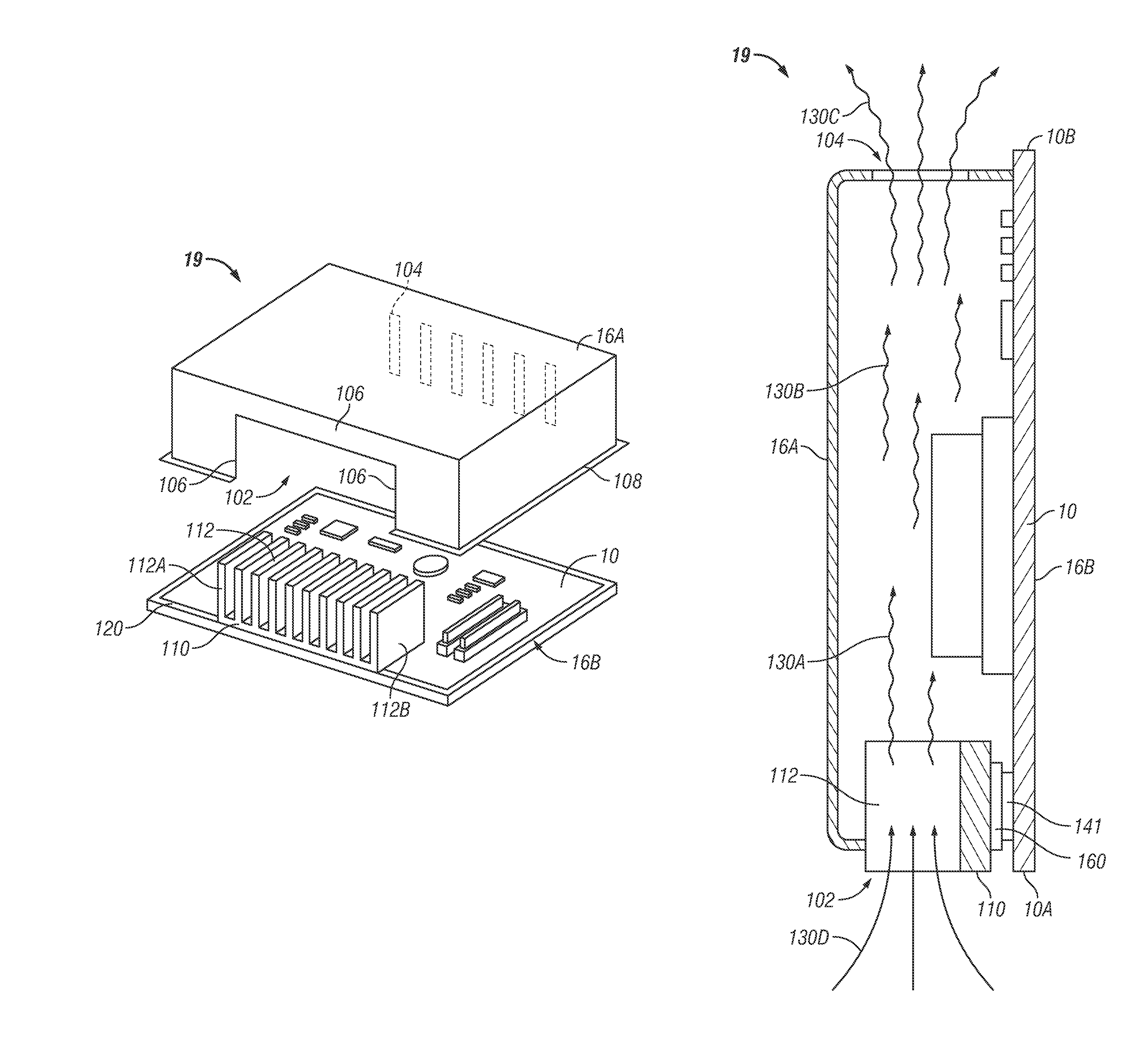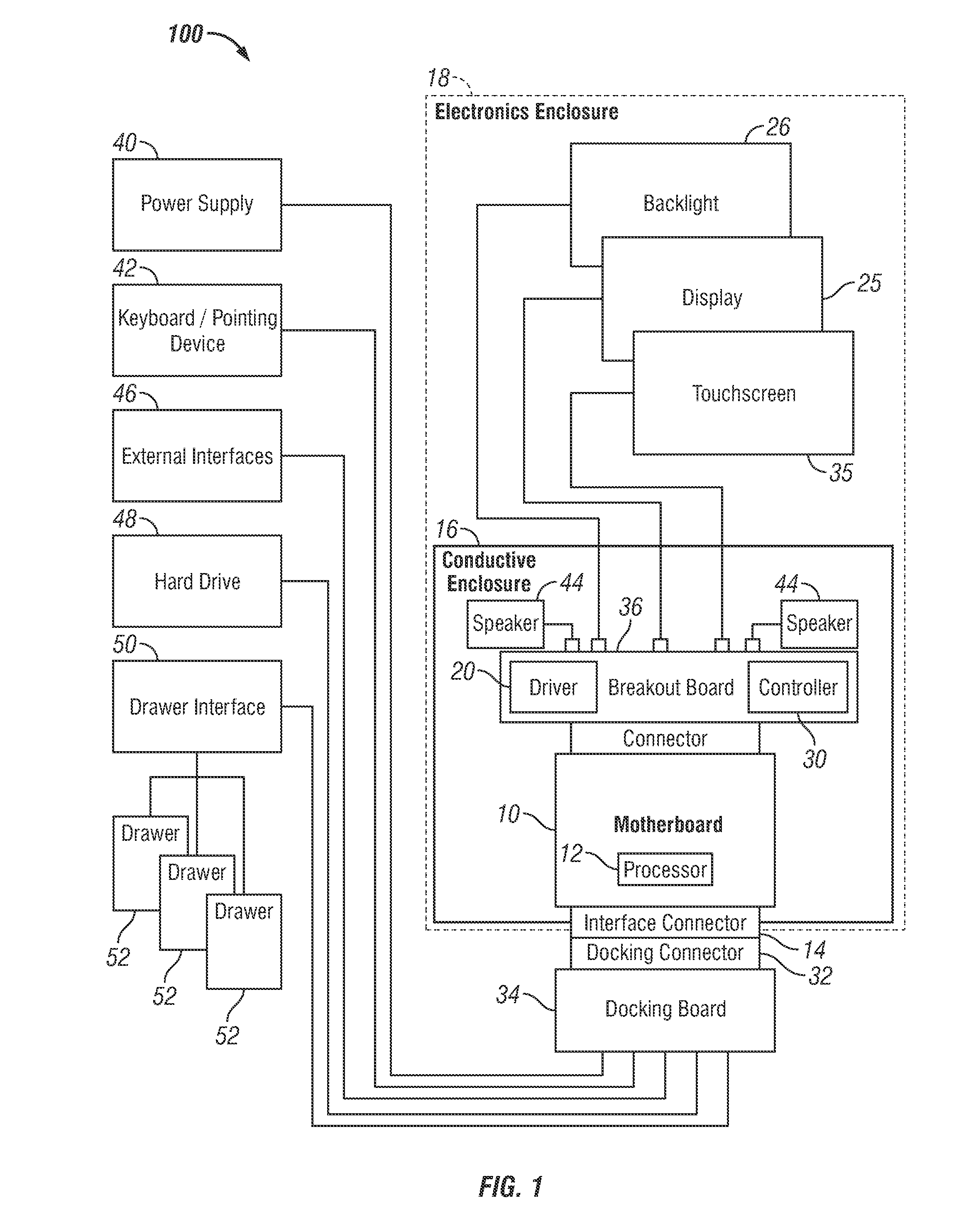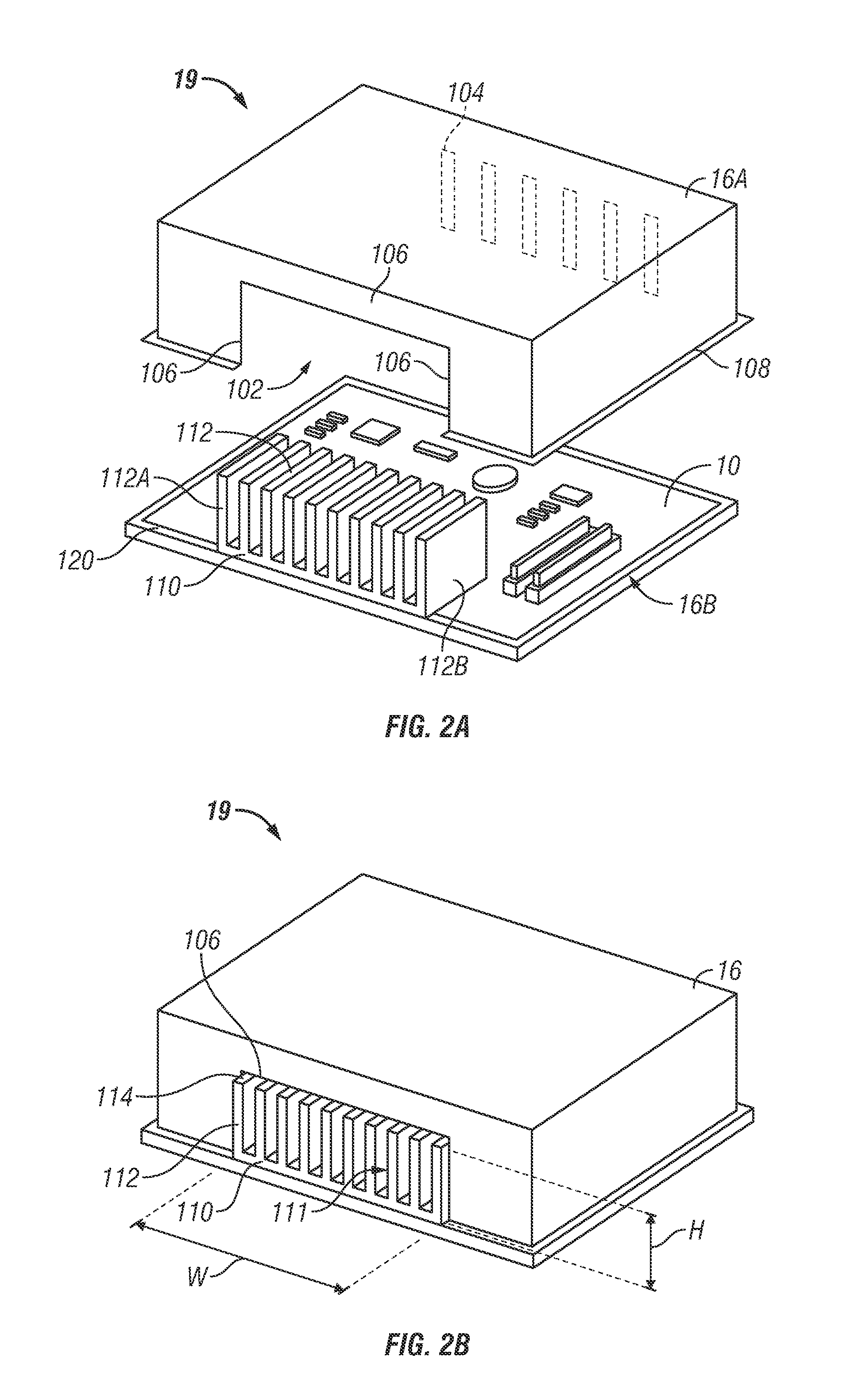Passive cooling and EMI shielding system
a passive cooling and shielding technology, applied in the direction of conduction heat transfer modifications, electrical apparatus casings/cabinets/drawers, instruments, etc., can solve the problems of fan noise, potential equipment downtime, etc., and achieve the effect of reducing the emi radiated and conducting and radiated emi emissions
- Summary
- Abstract
- Description
- Claims
- Application Information
AI Technical Summary
Benefits of technology
Problems solved by technology
Method used
Image
Examples
Embodiment Construction
[0021]The following description discloses embodiments of an electronics enclosure that provides for passive cooling of the enclosed electronics while providing EMI shielding of the electronics to meet regulatory requirements on electromagnetic emissions. In certain embodiments, a finned heat sink is thermally coupled to the electronic components to be cooled on an electronics assembly. A conductive enclosure fits around the electronics with an opening fitted around the heat sink and a second opening preferably on the opposite side of the enclosure. The fins are configured such that the gap between the fins is large enough to allow sufficient air flow to provide passive cooling while substantially blocking electromagnetic waves up to a maximum shielding frequency. This avoids the need to have a perforated portion of the conductive enclosure covering the fins and in the air path, which would add flow resistance and decrease the cooling performance.
[0022]In the following detailed descr...
PUM
| Property | Measurement | Unit |
|---|---|---|
| shielding frequency | aaaaa | aaaaa |
| frequency | aaaaa | aaaaa |
| frequency | aaaaa | aaaaa |
Abstract
Description
Claims
Application Information
 Login to View More
Login to View More - R&D
- Intellectual Property
- Life Sciences
- Materials
- Tech Scout
- Unparalleled Data Quality
- Higher Quality Content
- 60% Fewer Hallucinations
Browse by: Latest US Patents, China's latest patents, Technical Efficacy Thesaurus, Application Domain, Technology Topic, Popular Technical Reports.
© 2025 PatSnap. All rights reserved.Legal|Privacy policy|Modern Slavery Act Transparency Statement|Sitemap|About US| Contact US: help@patsnap.com



